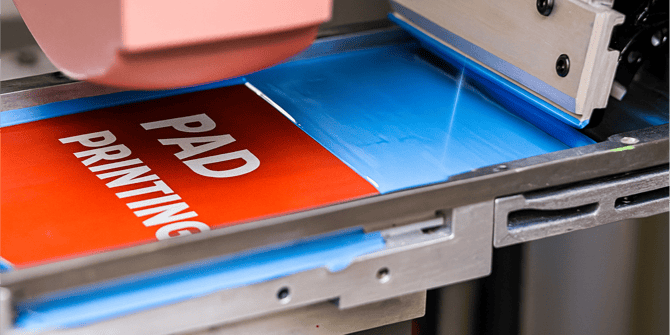What is Pad Printing?

Pad printing is a print method that uses a silicone pad to transfer ink from an etched plate onto a product’s surface. It’s especially effective for printing on curved, uneven, or textured items where other methods may struggle. Commonly used for promotional products like pens, keyrings, and gadgets, pad printing is ideal for sharp, single-colour logos and designs.
Tips for Designing for Direct to Garment (DTG) Printing
Avoid fine lines and intricate details
While DTG is capable of detail, ultra-fine elements may not always translate well on fabric—especially textured materials. Keep your design bold and simple for the most consistent print results.
Use a minimum font size of 8pt to maintain readability
Small text can blur or lose definition during the printing process. Stick to 8pt or larger to ensure legibility, particularly on darker or more absorbent fabrics.
Avoid overlapping paths—combine elements into one continuous graphic
If your artwork includes layered or stacked vector elements, merge them into one clean shape. Overlapping paths can cause issues with how the artwork is interpreted and printed.
Outline all strokes by converting them to shapes
Strokes or lines should be expanded into filled shapes. This ensures line weights are preserved and eliminates the risk of strokes being missed or printing inconsistently.
Don’t use gradients in your design
Although DTG supports full-colour designs, complex gradients can sometimes produce unpredictable results depending on fabric type and colour. For best results, use solid colour fills or simplified shading.
Ink may spread slightly during transfer
During the heat setting and curing process, ink can spread slightly. Avoid placing small elements or closely spaced features too near each other, as they may blur or merge when printed.